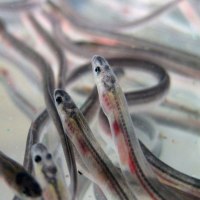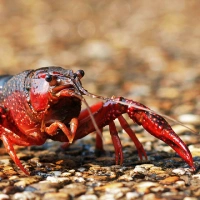Meet the BioFresh team: Szabolcs Lengyel
After our annual meeting last week, we return to our series of ‘behind the scenes’ looks into the work of BioFresh scientists this week with an interview with Dr. Szabolcs Lengyel, co-leader of the Conservation Ecology Research Group at the Department of Ecology at University of Debrecen in Hungary.

Szabolcs Lengyel. Photo: Gábor Ruff (http://www.gaborruff.com)
1 What is the focus of your work for BioFresh, and why?
I focus on benthic invertebrates, mainly mayflies such as the spectacular Long-tailed Mayfly (Palingenia longicauda), and on water-birds and true bugs of sodic alkali lakes, a habitat typically found on sea coasts but which also occurs in a unique biogeographic setting in the landlocked country of Hungary. We apply approaches and methods in systematic conservation planning to assist in the identification of hotspots and optimal conservation networks for freshwater biodiversity. We use sophisticated spatial analyses to quantify patterns in and prioritize areas for the conservation of freshwater biodiversity and ecosystem services in Europe. We also carry out smaller studies on rivers and alkali lakes to understand patterns in freshwater biodiversity at smaller scales that can be used to validate the larger-scale approach.
2 How is your work relevant to policy makers, conservationists and/or the general public?
Several recent studies pointed out that freshwater biodiversity is declining faster than either terrestrial or marine diversity. Knowledge of key areas for freshwater biodiversity allows us to improve conservation efforts such as designating protected areas and habitat management or restoration to areas that are critical for the maintenance of this quickly declining component of global biodiversity. Such information is crucial for policy makers and the general public to come up with ideas and solutions to allocate conservation efforts where they are needed the most or to identify areas where development and conservation may present conflicting interests.

Mayflies swarming
3 Why is the BioFresh project important?
The databases and joint knowledge integrated in the BioFresh project on freshwater biodiversity and ecosystem services offer a unique opportunity to ask questions that could not be addressed previously. For me, one of the most important of such questions is what would be an optimal designation of protected area networks based solely on freshwater biodiversity (considering as many species groups as possible: fishes, mollusks, odonates, aquatic plants, amphibians etc.). Such an optimal network could then be compared against currently existing protected areas that were predominantly selected to conserve terrestrial biodiversity. A knowledge of gaps and overlaps based on this comparison could then provide essential information for policy makers and the general public on where further conservation action is necessary.
4 Tell us about a memorable experience in your career.
I have been lucky to have several of such experiences. A recent one is from a comparison of genetic diversity of a large and a small existing and an extinct population of Long-tailed Mayfly. The results showed that the small Rába river population in western Hungary is the last remnant of the once widespread but now extinct northwestern European populations and that the large population of the Tisza river in eastern Hungary still harbours unexpectedly high genetic diversity, which may be explained by the existence of refugial areas for this species here during the ice ages.

Long-tailed mayflies
5 What inspired you to become a scientist?
When I was 11 years old, my uncle Csaba Aradi, a renowned ornithologist in Hungary, showed me White-tailed Eagles (Haliaetus albicilla) performing their spectacular pre-mating display flight above the endless plains of Hortobágy National Park in eastern Hungary. Ever since I have wanted to become a biologist doing research to save these and other mighty species from extinction.
6 What are your plans and ambitions for your future scientific work?
We have recently carried out the currently largest active restoration of grasslands on former crop-lands in Europe and our team continues to monitor the changes in plant and animal communities after the various restoration and management actions. I would like to extend this and other previous knowledge to larger spatial scales and to freshwater biodiversity to optimally allocate and improve conservation strategies and actions to meet the objectives of policy instruments adopted by the international community and eventually to do some good for declining biodiversity.

An alkali lake in Hungary














